Abstract
Egyptian vegetable production, with eggplant and tomato being the main crops, is also notable for its production volume and land use. According to the latest 2022 data, eggplant production was the highest at 1.4 Mt, underlining its position as the country’s leading cultivated vegetable. Tomatoes play an important role both for domestic consumption and for export, with most being produced for processing or fresh consumption. Tomato production is also affected by land use efficiency and climatic conditions, so advances in irrigation and agricultural techniques are contributing to improved productivity. Egypt is located in an arid region, so optimizing land use is directly linked to production volume, making efficient water resource management a key issue. Additionally, eggplant and tomato cultivation occupies a large amount of agricultural land and has a significant impact on the local economy.
Production (by vegetables)
A key feature of Egyptian vegetable production is the production volume, especially of eggplant. Looking at data from 1961 to 2022, eggplant production has increased year by year, peaking at 1.41 Mt in 2021. This year’s production volume reached an all-time high, indicating that eggplant plays a central role in domestic vegetable production. Production volume in 2022 will be 98.7% of its peak, showing a slight decrease but still remaining at a high level. This decline may be due to limitations in agricultural technology, improvements in land use efficiency, or fluctuations in market demand. The increase in eggplant production reflects the influence of Egypt’s climate, irrigation techniques and agricultural policies. Egypt is located in an arid region, so efficient water resource management is important for high-yielding crops like eggplant. Eggplant also occupies an important position in both domestic consumption and export, making it a vital crop in Egypt’s agricultural economy. In the future, it is expected that sustainable agricultural practices and the introduction of new technologies will contribute to further improvements in productivity.
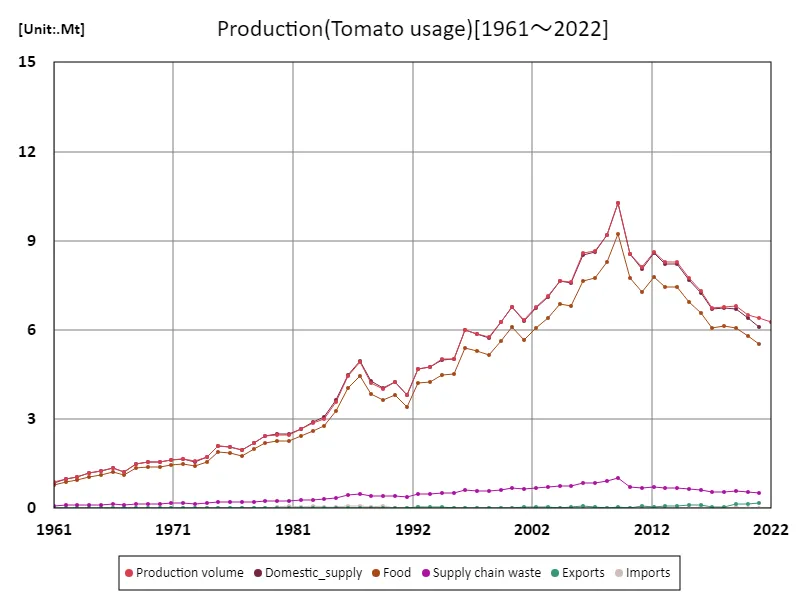

The maximum is 10.3Mt[2009] of Production volume, and the current value is about 61.1%
Yield(by vegetable)
Tomato in Egyptian vegetable production has experienced significant growth in recent years. Looking at data from 1961 to 2022, the tomato yield recorded in 2022 was 43.7t/ha, the highest ever, and tomato production reached its peak and remains at 100%. This increase can be mainly attributed to more efficient agricultural techniques and improved irrigation systems. Egypt is located in an arid region, so managing water resources through irrigation contributes to improving productivity, and optimized techniques for tomato cultivation have been established. Tomatoes are a crop that has a large impact not only on domestic consumption but also on the export market, so increasing production has important economic implications. In particular, as demand for processed tomatoes (juice, paste, etc.) has increased, producers have introduced high-yielding varieties and efficient cultivation techniques to meet that need. This has established Egypt as a major tomato producing country. Furthermore, increased tomato production is also contributing to improved profitability in agriculture, and as agricultural policies and support systems continue to improve, even more stable production is expected. In the future, adaptation to climate change and the introduction of sustainable agricultural techniques will likely be factors that further support the future of tomato production.
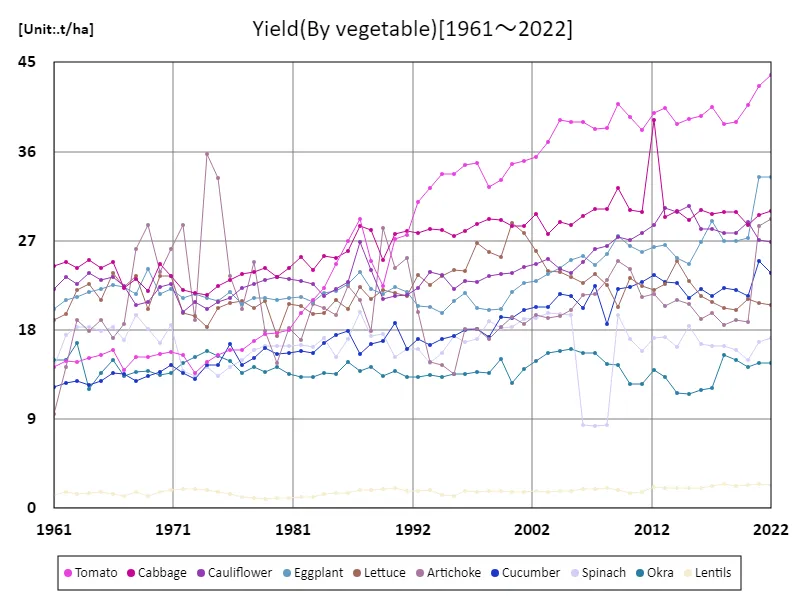

The maximum is the latest one, 43.7t/ha of Tomato
Land use (by vegetables)
Land use trends in vegetable production in Egypt show notable characteristics, particularly for tomatoes. According to 2022 data, tomatoes occupy the largest area and are cultivated on 144kha of land. This represents the largest proportion of the total vegetable production area, highlighting the importance of tomatoes in Egyptian agriculture. Tomato production requires extensive land area to support domestic consumption and export market demand. On the other hand, the total vegetable production area is 253kha, of which tomatoes account for a very large proportion. The average land use area is 25.3kha, and is characterized by its concentration on tomato production. This trend reflects the fact that tomatoes are a major crop in Egypt’s agricultural economy. The wide area of tomato cultivation indicates that, thanks to improvements in irrigation technology and land use efficiency in Egypt, tomatoes have become established as a crop that can produce high yields on larger amounts of land. Tomato production not only meets domestic food demand, but also contributes to earning foreign currency through exports, making it an essential crop for agricultural revenue generation. In the future, further improvements in productivity are expected with the introduction of sustainable agricultural techniques.
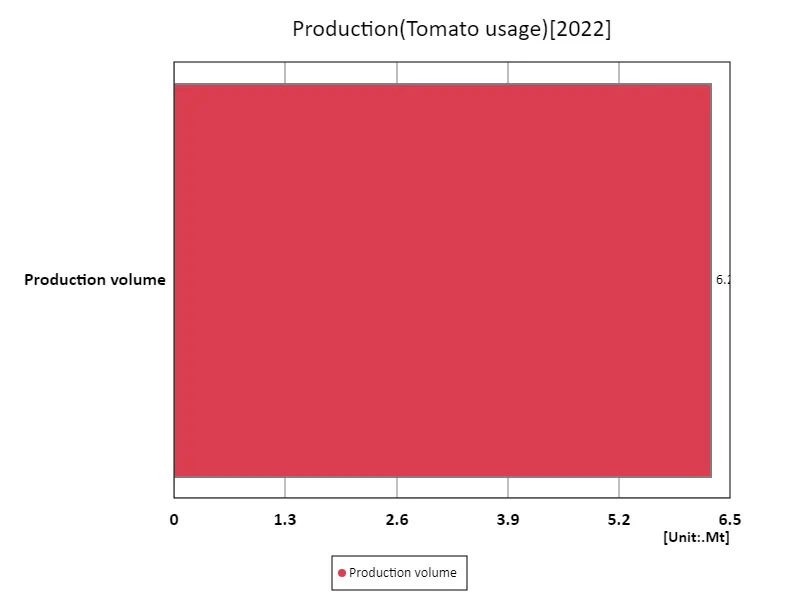

The maximum is 6.28Mt of Production volume, the average is 6.28Mt, and the total is 6.28Mt
Tomato usage
The trends in Egyptian tomato production by use can be clearly seen based on data from 1961 onwards. As of 1961, tomato production was 10.3 Mt, which was the peak year. Depending on their use, tomatoes are mainly divided into fresh and processed varieties, but in Egypt, demand for processed tomatoes is also increasing, and the production volume is having a major impact on the export market. Fresh tomatoes contribute significantly to domestic consumption and are widely used for home cooking and for sale in markets, while processed tomatoes are supplied to many export destinations in the form of juice, paste, canned products, etc. For this reason, Egypt is scaling up tomato production and adopting cultivation techniques optimized for the specific uses of the production. In particular, as demand for processed tomatoes increases, Egyptian farmers are improving productivity by selecting high-yielding varieties and introducing efficient irrigation and soil management techniques. Tomatoes are also an important source of revenue for Egypt’s agricultural economy and contribute to earning foreign currency through exports. In the future, further quality improvements and optimization of production will be required to meet the increasing demand for tomatoes for processing.
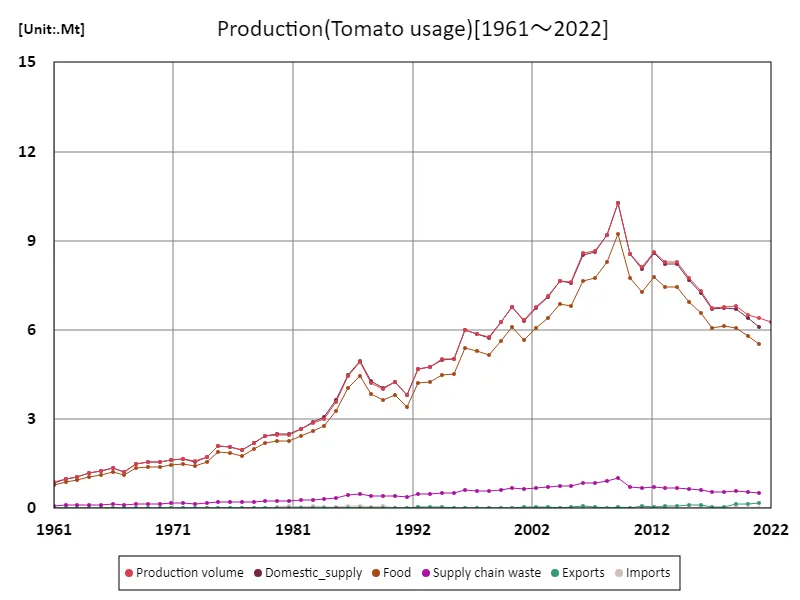

The maximum is 10.3Mt[2009] of Production volume, and the current value is about 61.1%
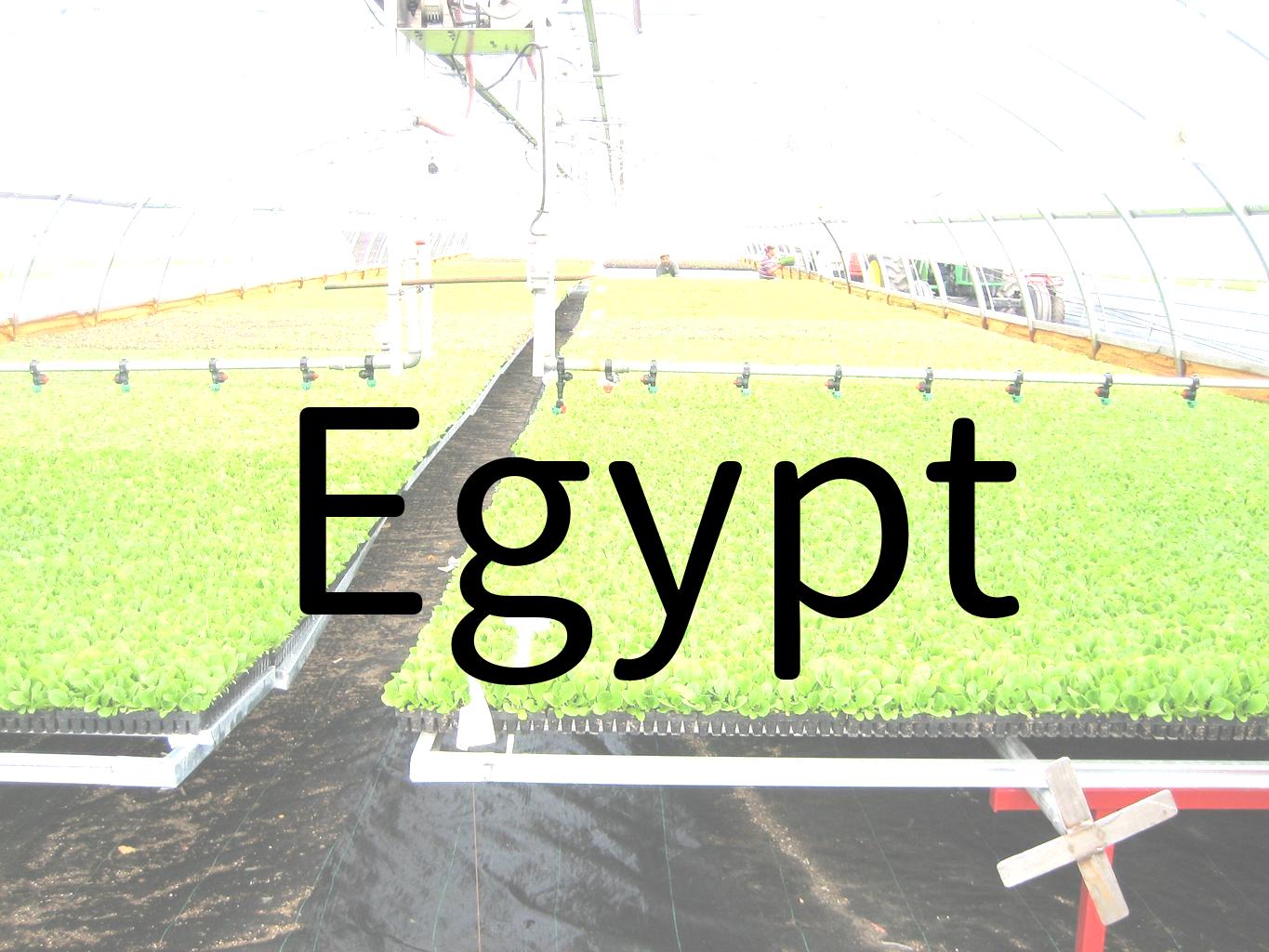


Comments